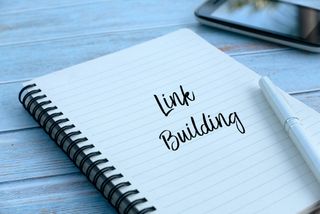10 tips for writing blog posts that are SEO-friendly
Having a blog that ranks might seem easier said than done. Even if your posts cover interesting topics and include valuable information from reliable sources, they won't rank unless they're SEO-friendly. So, how can you make it happen?
If you're a beginner unsure where to start, here are 10 pro tips for writing blog posts that are both valuable and SEO-friendly, helping to boost your blog to the top positions. For a comprehensive guide on the optimization process itself, check out our detailed post on how to optimize content for SEO.

Best tips for writing blog posts from a seasoned writer
After almost a decade of writing SEO-friendly content, we’re going to share our most precious tips for writing blog posts. These tips are simple, easy to apply on a large scale, and will completely change your game.
Think before writing
Before starting to write a blog post, you need to make a plan. Besides checking the keywords and understanding the real user intent behind your topic, we recommend that you first write down why you want to create a blog post on that subject and consider if it's a good fit for your blog. Next, think about how you're going to make your content more valuable than what's already out there. This means RESEARCH. During your research, you might discover whether the keyword is worth pursuing or if there's a more interesting alternative. Take your time to develop a strategy and weigh whether it's worth the effort to write about a topic that, for example, already has thousands of articles published.
To ensure your article is SEO-friendly after publishing, you can use our SEO Analyzer to review your content optimization and identify areas for improvement.
What are your competitors talking about?
As soon as you know your topic, check out your competitors. This is a great way to define what you should add (or exclude) from your content. Review the first 5 results for your main keywords and read those articles. Is there anything all of them are addressing? Add it. Is there valuable information missing? Take advantage of that and include it in your content. Ensure your content meets user intent (the top 5 results are ranked because they address the user’s question) and provide additional insights that your audience may not have realized were valuable. Differentiate yourself from the competition.
A good structure is key
When your blog post is well-organized, it becomes easier for readers to follow and absorb the information you’re presenting. Start with a clear introduction, break your content into sections with relevant headings and subheadings based on the keywords you have, ending with a strong conclusion. A logical flow not only improves user experience but also helps search engines understand and rank your content better, giving it a higher chance of success.

An engaging title will set you up for success
An engaging title is one of the most important elements of a successful blog post. It’s one of the first things readers see, and it plays a key role in grabbing their attention. A well-crafted title should spark curiosity, highlight the value of your content, and encourage users to click and read more. When you put thought into your title, you’re setting your article up for success by attracting the right audience and increasing engagement.
Start with general information, then move to more specific details
When writing a blog post, it's important to structure your content in a way that guides readers through the topic. Start by covering the general information. This gives context and ensures your audience understands the basics. Once the foundation is set, gradually move into more specific details, providing depth and value to your content. This approach not only keeps readers engaged but also helps them easily follow your train of thought, making your article both user-friendly and informative.

Make your content accessible
When writing your content, avoid long sentences and paragraphs. Your content should be understandable for your audience. This is not an academic paper. Keep your writing concise and to the point, using short sentences and simple language that make it easy for readers to follow. Break up large blocks of text into smaller, manageable paragraphs to improve readability. Remember, online readers tend to skim, so clarity and brevity are essential for keeping their attention and ensuring they fully grasp your message.
To check if your content is readable and engaging, use our Readability Score Checker tool to evaluate and improve the accessibility of your writing.
Skip thin, invaluable content
Google HATES thin content. Writing a blog post isn't just about adding as many words as possible to make it seem like your post is the most complete on the internet. In fact, recent Google algorithm updates have negatively impacted long, thin content. Focus on answering your visitors' questions and creating interesting, valuable content. It doesn't matter if it's a 400-word article. If it's top-notch, Google will reward you. The most effective blog posts are those that solve the questions users are seeking answers to.
After writing your content, make sure you're using your target keywords effectively with our Keyword Density Checker to optimize keyword placement without overstuffing.

Add your sources to the article
Recently, Google has been promoting articles written by professionals with visible resources to prevent users from encountering false information. We trust that you're not going to spread misinformation in your article (don't do it, it's wrong and will negatively affect your blog). Since you'll be checking resources while writing, make a list of them and add it at the end of your article. This way, you’ll show both Google and your readers that the information is legit. You can even include an external link to make the content even more SEO-friendly.
Don't forget to link to previous articles
Recently, Google has been promoting articles written by professionals with visible resources to prevent users from encountering false information. We trust that you're not going to spread misinformation in your article (don't do it, it's wrong and will negatively affect your blog). Since you'll be checking resources while writing, list them and add them at the end of your article. This way, you’ll show both Google and your readers that the information is legit. You can even include an external link to make the content even more SEO-friendly.

Create an engaging meta title and meta description
While a good title will encourage users to click on your article, the meta title and description are even more important. Think of these as the first impression users will have of your content when searching for answers, and we all know that first impressions are crucial. Craft an engaging meta title and a meta description with a cliffhanger that will make users want to click on your article to learn more.
P.S.: In this article, we’ve focused on the writing aspect. However, in addition to these tips for writing blog posts, you’ll need to consider other crucial steps related to the article’s layout (such as adding visual content with alt text, videos, etc.) and technical aspects (like implementing schema markup and making the content shareable). Start now and boost your blog by writing engaging & SEO-friendly content!